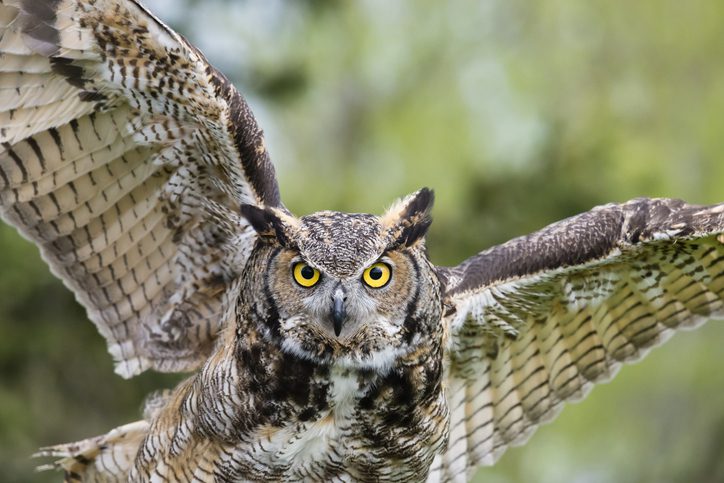
Getty Images
Whether you’re in the forest or at your neighborhood park, there’s a chance you’ll be able to spot one of these birds of prey.
Amid leafless trees and snow-covered surroundings, Michigan’s owls are often easier to spot and hear during the winter.
Whether you’re a casual bird watcher or part of the annual Bird Count, here’s how you can tell the difference between each owl that spends their winters in Michigan.
RELATED: Birdwatching in winter? Yes! Here are 10 favorite places in Michigan
Northern Saw-whet Owl
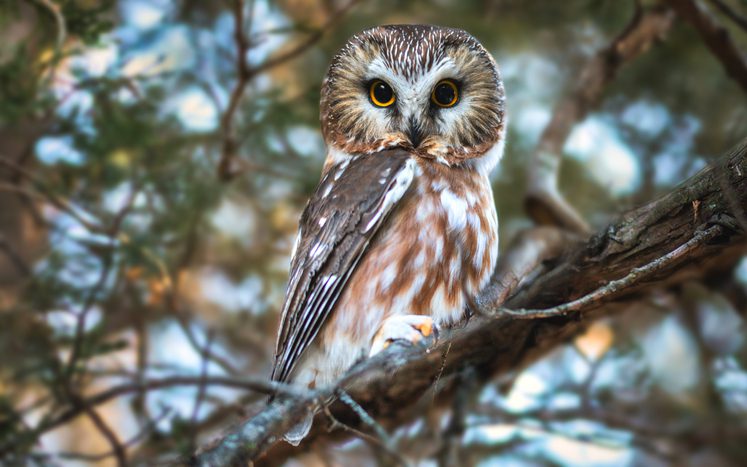
A Saw-Whet owl sits in a tree. Lavin Photography/Getty
Standing at just seven inches tall, the Northern Saw-whet Owl can be found within the forests of Northern Michigan. Their brown, broad feathers enable them to easily camouflage with their surroundings.
While they’re usually silent, the male Northern Saw-whet Owl is known for the “tooting” noises they make during mating season—typically late winter to early spring.
Snowy Owl

A young snowy owl, sits along U.S. Highway 2 in Manistique in Schoolcraft County. John Pepin/Michigan DNR
Often found near Canada’s southern border, the Snowy Owl is known for its snow-white coat and piercing yellow eyes. They can be seen flying above wide-open spaces, looking for lemmings—a type of small rodent—to feed on.
The Snowy Owl is typically silent, but will make shrill whistling sounds while on breeding grounds to communicate with potential mates.
Great Horned Owl
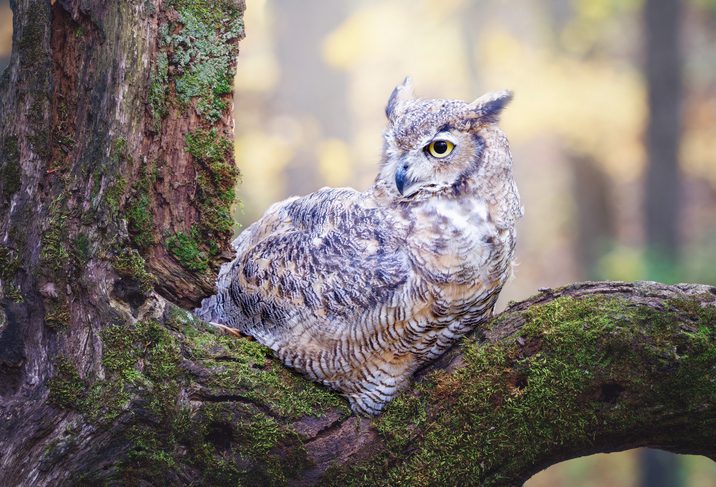
Great Horned Owl resting in a forest in Howell. Adrienne Elliot/Getty
While their “ear” tufts make them look cute, the Great Horned Owl is an aggressive and powerful hunter—preying on rabbits, hawks, snakes, skunks, and even porcupines.
At just over two feet tall, the massive Great Horned Owl can be found year-round in habitats across North America, from dense forests to cities. Their songs and calls can range from low, sonar-sounding “hoo hoots” to rough barking noises to alert others of nearby danger.
Eastern Screech Owl
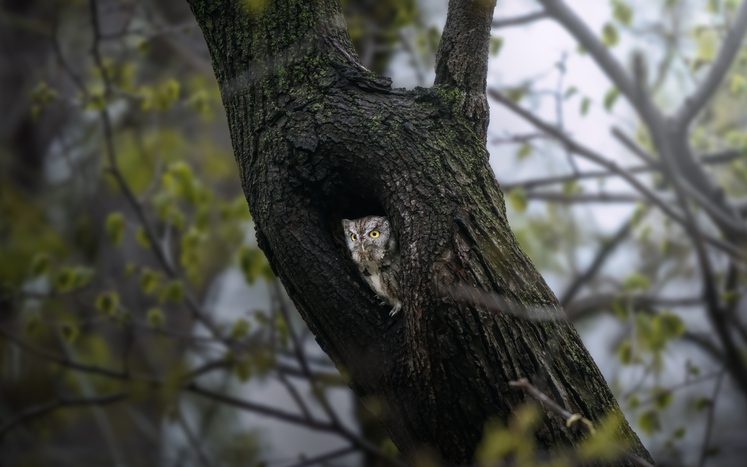
Eastern Screech Owl sits inside a tree. Lavin Photography/Getty
Michiganders living in the lower peninsula might not know it, but the Eastern Screech Owl could be one of their neighbors. The robin-sized nightbird can be found living in trees in city parks and shady suburbs.
Despite their name, these owls don’t screech—they sound off with a signature whine and soft trills.
To learn more about Michigan’s other winter birds, check out the MI Birds program. .
Support Our Cause
Thank you for taking the time to read our work. Before you go, we hope you'll consider supporting our values-driven journalism, which has always strived to make clear what's really at stake for Michiganders and our future.
Since day one, our goal here at The 'Gander has always been to empower people across the state with fact-based news and information. We believe that when people are armed with knowledge about what's happening in their local, state, and federal governments—including who is working on their behalf and who is actively trying to block efforts aimed at improving the daily lives of Michigan families—they will be inspired to become civically engaged.


No license needed. How to fish for free in Michigan this week
Grab your fishing rods, sandwiches and, maybe, a few friends for a weekend of free fishing, as the state celebrates its second free fishing weekend...

The ultimate guide to backpacking in Michigan
Check out our tips for beginners and experts alike to get you started on backpacking in Michigan this summer. If you're looking to go backpacking in...
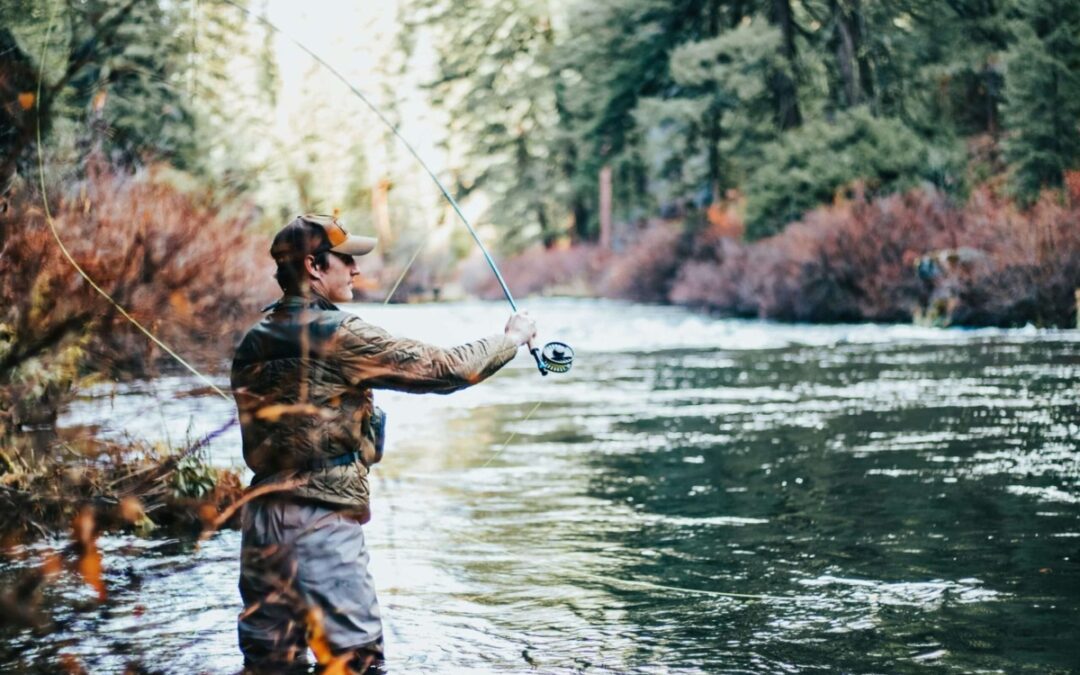
Attention, anglers! Here are the 8 best fly fishing spots in Michigan
Get your waders out, because Michigan was voted the best state for fly fishing, and we've got the inside scoop on where to go! Fly fishing...

Summer safety on the water: Livingston County PFAS foam alert
Michigan health officials warn of PFAS-contaminated foam on waterways as summer approaches. Learn the risks and how to protect your family. With...

Glowing rocks in Michigan? What to know about ‘Yooperlites’
Most people do their rock hunting during the day, but you can't find "Yooperlites" until the sun goes down. Yooperlites are rocks that fluoresce in...







